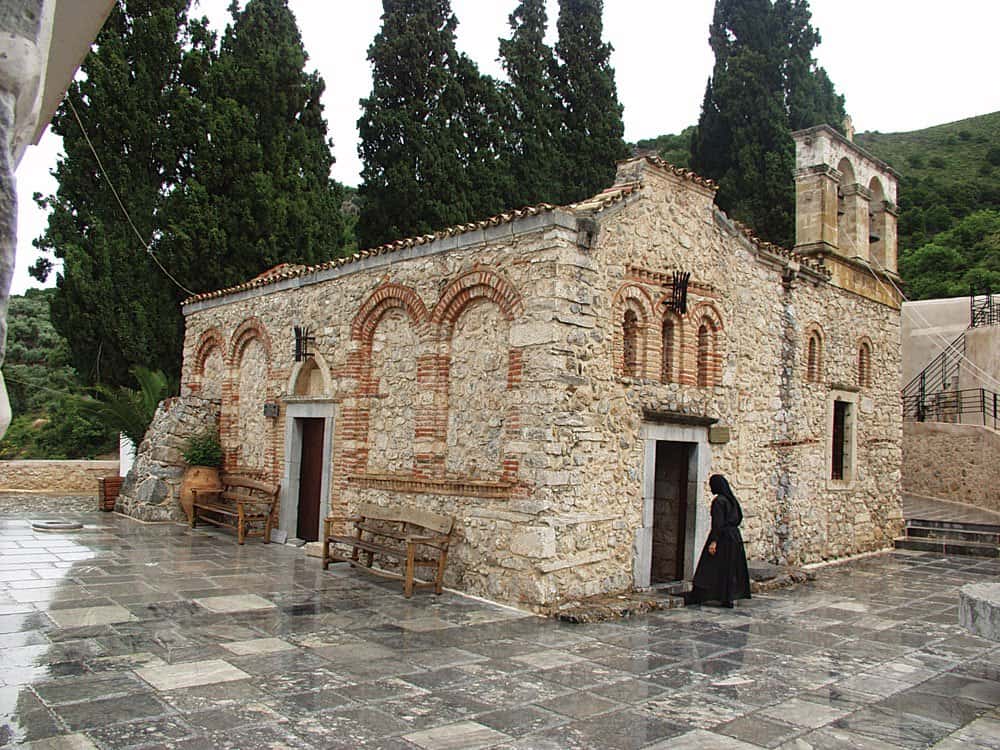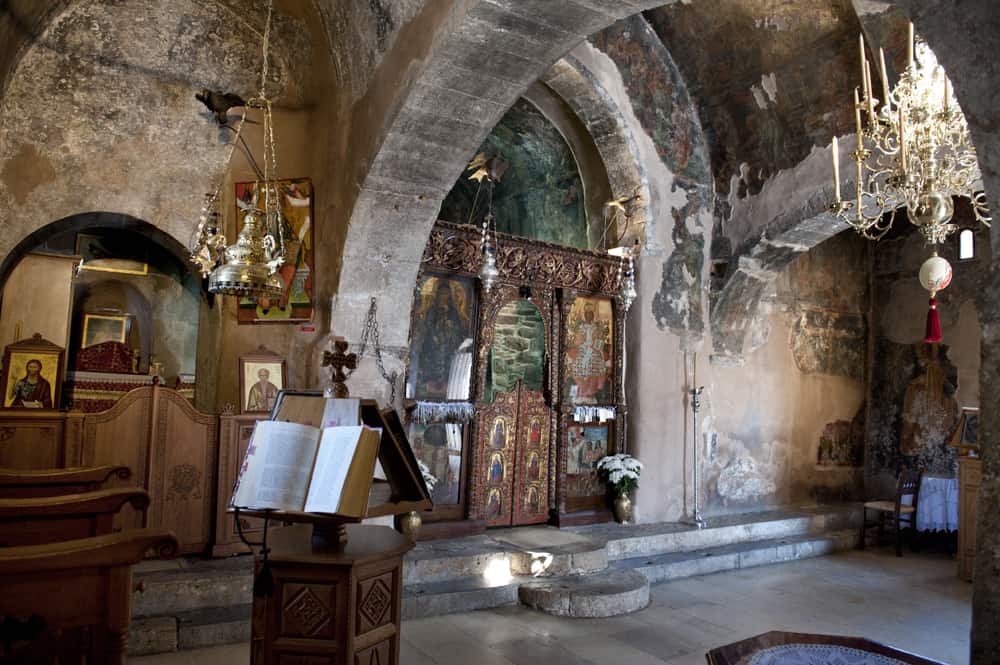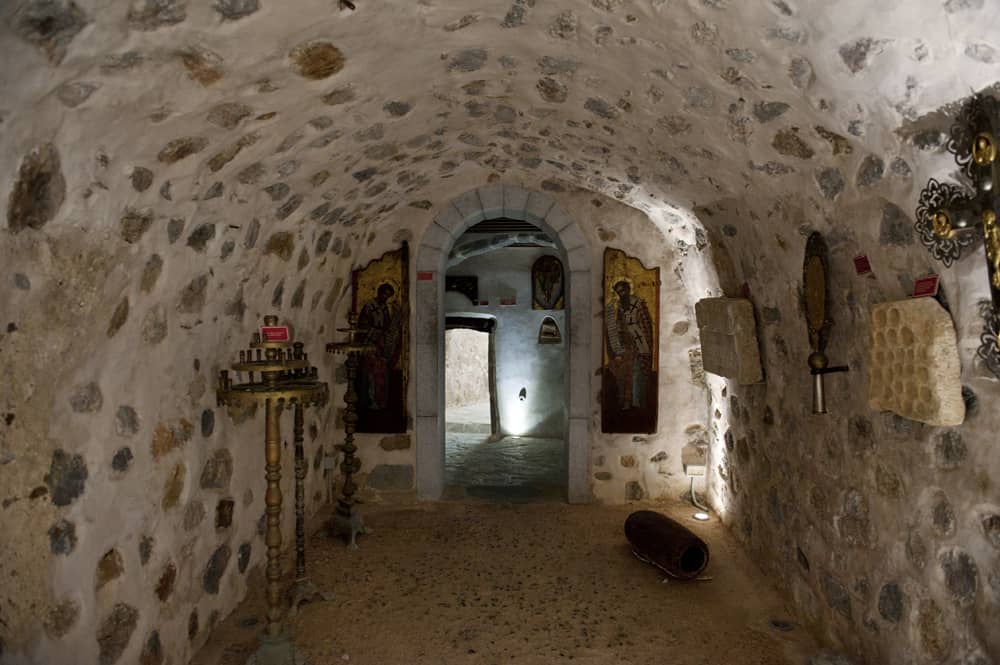The monastery of Panagia Kera is located in Agios Nikolaos, 50 kilometers southeast of Heraklion in the Dikti Mountains.

The monastery of Panagia Kera is located in Agios Nikolaos, 50 kilometers southeast of Heraklion in the Dikti Mountains.
The history of the monastery, the legends and the traditions regarding the miraculous icon of the Theotokos attract every year many believers and make the monastery one of the most important religious places of Crete. The age of the monastery dates back to the 12th Century, but it is not known exactly when and by whom it was founded.
The first written record dates from 1415.
It is located in a remarkable setting, high in the mountains, at an altitude of 630 meters overlooking a valley.
The church of Panagia Kera is dedicated to the Assumption of the Virgin.

The central aisle dedicated to Virgin Mary contains the oldest paintings while the north aisle is dedicated to Agios Antonios and has several pictures representing the Judgment Day. Many miracles were associated with the icon of Panagia Kera. According to tradition, during the Byzantine period of Iconoclasm, the icon of Panagia was transferred to Constantinople but it found its way back to the monastery. During the Venetian domination, the icon was stolen by a Greek trader and a few years later it was moved to the temple of Saint Alfonso on Esquiline Hill, in Rome.
In 1722, the monastery was fully renovated by the Managgaris family and it became a Holy Cross church. Today, the icon which adorns the monastery is only a copy of the original that was successfully painted in 1732 by an unknown artist and it is believed that it has the same miracle attributes. The architecture of the monastery follows the Byzantine style with arrows and ceramic decoration.
Inside the church are frescoes dating back to the 14th century and old icons. The well-preserved paintings of the holy figures are mostly highlighted by the vivid colors which prove that the frescoes date back to the art painting of Paleologian.

The present buildings and monastic cells were built between 1960 and 1970.
After the conquest of Crete by the Turks (1669), the monastery was a place of refuge for the insurgents and housed and catered the people from the surrounding villages.
In 1822, a year after the start of the Greek liberation struggle, the monastery was burnt down by the Turks. The same thing happened about 20 years later, after the Cretan revolt of 1841. In the 20th Century, there was a danger that the monastery had to be abandoned because there were not enough young monks.
Its conversion to a nunnery by the Archbishop of Crete has now secured its survival.
The monastery's consecration celebration is on the 8th of September, however, thousands upon thousand will also gather here every year on August 15.

